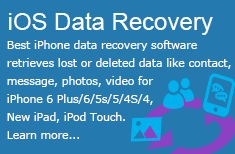We bet you couldn’t quit your phone even if you wanted to.

With iTunes retired in macOS Catalina, users might wonder how to backup an iPhone 11/11 Pro to your computer and then how to restore the data to iPhone 11. Have no fear, it’s as easy as ever by following guide.
Link building has been in existence ever since search engine optimisation was developed. It was once the primary concern of SEO specialists. Teams were created to do nothing but come up with a multitude of links for a site to earn it a higher rank in search results. To obtain these links, “link specialists” had to contact website owners to exchange links or to buy them.
If you bought a new phone, how do you transfer the data from the old one?
We know switching smartphones is so painful, and especially so when the new device has a different OS. Syncios Data Transfer is an awesome tool to solve this problem, as it allows you to migrate almost all the data from your iOS or Android devices. This includes not just contacts, videos, photographs and messages, but also call logs, music files, ebooks and apps.
It provides Windows and Mac version, which includes everything that is present in your smartphone. While setting up a new device, you will have virtually the same contents as your old one. It’s really remarkable that something like this is made possible by a program so cheap. Syncios Data Transfer will cost $29.95 for a lifetime license that will entail all the latest updates released by the makers.
It’s said that you only get one chance to make a first impression. When it comes to your web design, that chance measures out to about 2.6 seconds, according to researchers. It takes about that long for an internet user’s eyes to go the specific area of a website that influences their first impression.
Image Credit: fotolia.com
Eye Tracking Study Results Where Users Focus Most
The results of a study conducted at Missouri University of Science and Technology revealed that internet users spend less than three seconds scanning a website before they focus on a particular section. Then they spend an average of 180 milliseconds (0.18 seconds) focusing on one particular section before making a decision about whether to move on.
If the website doesn’t load in two seconds or less, chances are very good that the internet user will not come back to your site. They will simply click away and move on to a different one.
If your website is on a shared hosting plan, your site’s loading speed may be effected if a co-owner experiences a large spike in traffic. Other sites may find that their loading speed is slower as a result. You don’t necessarily have to spend a lot of money to get a good hosting plan; it makes sense to compare sites and find the cheapest web hosting plan that will give you the features you need at the best price.

Markup is a beautiful thing, and it certainly has changed over the years. What was effectively HTML1, has certainly progressed to an amazing semantic markup language, to which we can largely thank the W3C. And, what do ya know, the next thing to thank them for has come about – HTML5.
Unlike previous version of HTML, where the code was mostly a limited structure that was determined by how you made use of the class and ID elements, html5 really attempts to provide much more structure.
All of the layout can be created with semantic tags and elements that determine how you should structure, and, arguably more important, that help you structure each page. This produces code that is much more clean and readable than in previous versions of HTML, and really is something quite amazing. The new tags really require that you think about how you are structuring your page, which let’s be honest – in the end that is a great thing for us web designers and developers alike.
Before understanding the structure of HTML5, and how to create and code an example template to use for your projects you should be aware of how it came about. Be aware though that the current version of HTML5 has not reached a version that the W3C could call final as of yet, but their is quite a lot to learn about and start using in your code right now. Here is what the W3C has to say on this issue: Read on »
Like fashion world, the excellent web designers also eager to find creative ways to make their work more remarkable by exploring new possibilities and apply variations with existing or new web design trends. From either year 2011 or the several months past in 2012, we can easily notice how people design.
Since Elliot Jay Stocks so poignantly told us to destroy the Web 2.0 look, we’ve witnessed a de-shinification of the Web, with fewer glass buttons, beveled edges, reflections, special-offer badges, vulgar gradients with vibrant colors and diagonal background patterns. The transformation has been welcomed with relief by all but the most hardened gloss-enthusiasts. However, design and aesthetics work in mysterious ways, and no sooner does one Web design trend leave us before another appears.
The Symptoms
So, exactly what is this new epidemic? Well, let’s start by looking at some of the most common symptoms, many of which you have probably noticed. They are easy to spot, and as with many other conditions, they often appear in conjunction with each other. (This is why the contagion spreads so effectively — seemingly independent symptoms grow more infectious when combined with others.)
Please note: The following list appears in no particular order and does not indicate the level of infectiousness or severity, which seem to be stable across the board. Note also that the instances given often exhibit more than one symptom, making classification more difficult.
Stitching
Stitching appears gradually, often as a result of the designer playing too long with borders and lines, particularly of the dotted variety. A full-blown stitch is evidenced by the subtle shift from dots to dashes, augmented by drop shadows and other effects to give the impression of 3-D. The purpose of the stitch is somewhat elusive, but it seems to thrive in environments where certain textures are applied, most notably fabric and leather, but also generic graininess.
While determining the exact cause of stitching is difficult, scientists are certain that it belongs to a larger strain of the infection known as “Skeuomorphism.”






 Buy or sell a logo
Buy or sell a logo iOS Data Recovery
iOS Data Recovery Mobile Data Transfer
Mobile Data Transfer